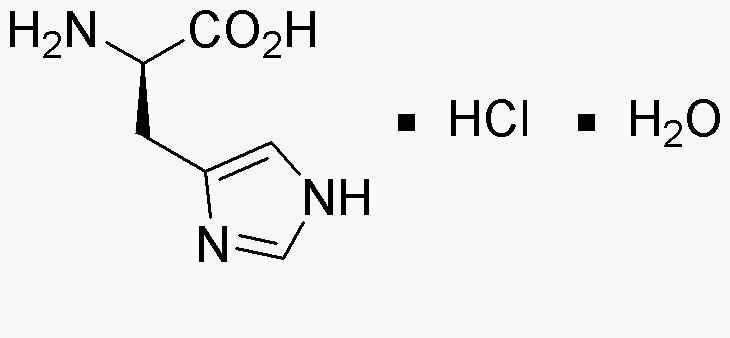D-Histidine hydrochloride monohydrate is widely utilized in research focused on:
- Biochemical Research: It serves as a building block for peptide synthesis, enabling scientists to create specific peptides for studying protein interactions and functions.
- Pharmaceutical Development: This compound is used in drug formulation, particularly in medications targeting neurological disorders, due to its role in histamine regulation.
- Nutrition and Dietary Supplements: It is incorporated into supplements aimed at enhancing athletic performance and recovery, as histidine is essential for muscle metabolism.
- Cell Culture Media: D-Histidine hydrochloride is added to cell culture media to support the growth of various cell types, improving the yield and viability of cultured cells.
- Analytical Chemistry: It is employed as a standard in chromatographic techniques, helping researchers accurately quantify histidine levels in biological samples.
General Information
Properties
Safety and Regulations
Applications
D-Histidine hydrochloride monohydrate is widely utilized in research focused on:
- Biochemical Research: It serves as a building block for peptide synthesis, enabling scientists to create specific peptides for studying protein interactions and functions.
- Pharmaceutical Development: This compound is used in drug formulation, particularly in medications targeting neurological disorders, due to its role in histamine regulation.
- Nutrition and Dietary Supplements: It is incorporated into supplements aimed at enhancing athletic performance and recovery, as histidine is essential for muscle metabolism.
- Cell Culture Media: D-Histidine hydrochloride is added to cell culture media to support the growth of various cell types, improving the yield and viability of cultured cells.
- Analytical Chemistry: It is employed as a standard in chromatographic techniques, helping researchers accurately quantify histidine levels in biological samples.
Documents
Safety Data Sheets (SDS)
The SDS provides comprehensive safety information on handling, storage, and disposal of the product.
Product Specification (PS)
The PS provides a comprehensive breakdown of the product’s properties, including chemical composition, physical state, purity, and storage requirements. It also details acceptable quality ranges and the product's intended applications.
Certificates of Analysis (COA)
Search for Certificates of Analysis (COA) by entering the products Lot Number. Lot and Batch Numbers can be found on a product’s label following the words ‘Lot’ or ‘Batch’.
*Catalog Number
*Lot Number
Certificates Of Origin (COO)
This COO confirms the country where the product was manufactured, and also details the materials and components used in it and whether it is derived from natural, synthetic, or other specific sources. This certificate may be required for customs, trade, and regulatory compliance.
*Catalog Number
*Lot Number
Safety Data Sheets (SDS)
The SDS provides comprehensive safety information on handling, storage, and disposal of the product.
DownloadProduct Specification (PS)
The PS provides a comprehensive breakdown of the product’s properties, including chemical composition, physical state, purity, and storage requirements. It also details acceptable quality ranges and the product's intended applications.
DownloadCertificates of Analysis (COA)
Search for Certificates of Analysis (COA) by entering the products Lot Number. Lot and Batch Numbers can be found on a product’s label following the words ‘Lot’ or ‘Batch’.
*Catalog Number
*Lot Number
Certificates Of Origin (COO)
This COO confirms the country where the product was manufactured, and also details the materials and components used in it and whether it is derived from natural, synthetic, or other specific sources. This certificate may be required for customs, trade, and regulatory compliance.


